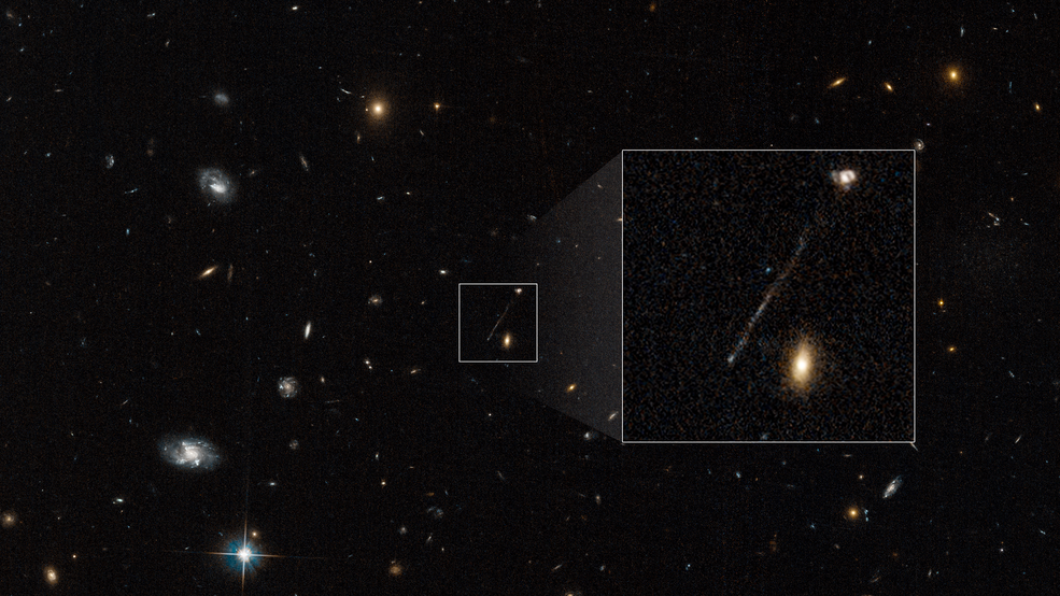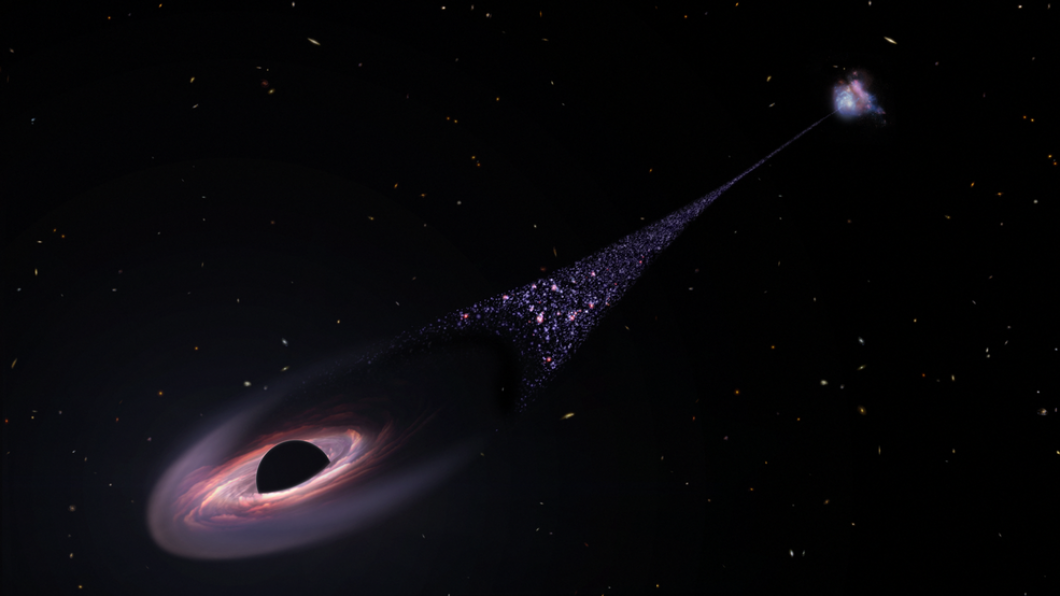
NASA’s Hubble Space Telescope captured an image of a “runaway” supermassive black hole that left behind a never-before-seen star trail across a great distance.
The colossal black hole is estimated to weigh as much as 20 million suns and left behind a “contrail” 200,000 light-years long — twice the diameter of the Milky Way, according to NASA. The capture was accidental, explained Pieter van Dokkum of Yale University in New Haven, Connecticut.

SCIENTISTS FIND ONE OF THE LARGEST BLACK HOLES USING NEW TECHNIQUE
“This is pure serendipity that we stumbled across it,” he said. “I was just scanning through the Hubble image, and then I noticed that we have a little streak. I immediately thought, ‘Oh, a cosmic ray hitting the camera detector and causing a linear imaging artifact.’ When we eliminated cosmic rays, we realized it was still there. It didn’t look like anything we’ve seen before.”

The black hole is moving at such a fast speed that it doesn’t absorb much, instead plowing into gases that are in front of the black hole. The movement of the gases is enough to trigger new star formations, which trail behind the void.
CLICK HERE FOR MORE FROM THE WASHINGTON EXAMINER
“We think we’re seeing a wake behind the black hole where the gas cools and is able to form stars. So, we’re looking at star formation trailing the black hole,” van Dokkum said. “What we’re seeing is the aftermath. Like the wake behind a ship, we’re seeing the wake behind the black hole. … Gas in front of it gets shocked because of this supersonic, very high-velocity impact of the black hole moving through the gas. How it works exactly is not really known.”
The black hole itself was likely formed from the collision of three supermassive black holes. Researchers speculate that two collided and circled around each other when two galaxies collided around 50 million years ago and then hit another. One of the three broke off in the opposite direction, sending the other combined two speeding through the universe.





